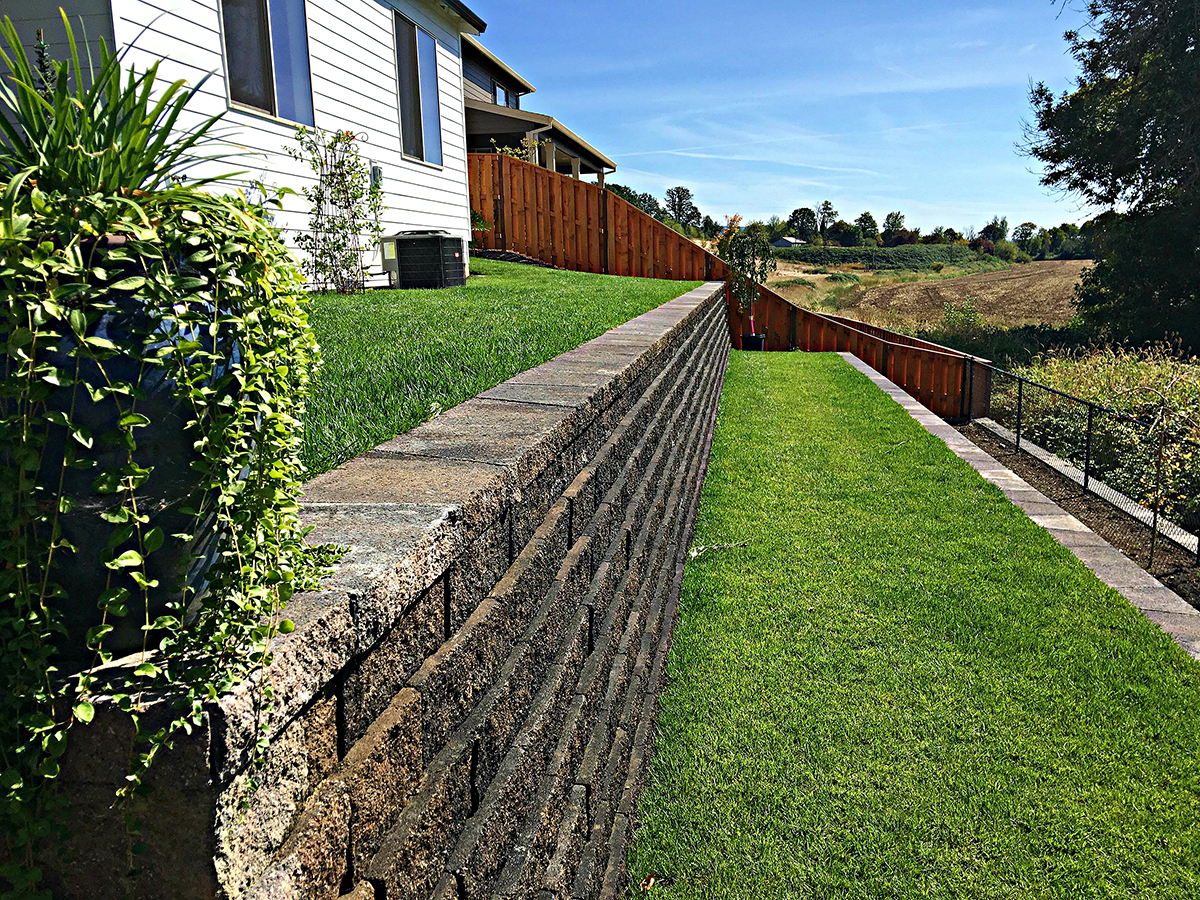How to Build a Retaining Wall
That Won't Fall Over
I love living in the Hill Country of Texas. But as such, there are areas that need a great retaining wall to extend the landscape possibilities. Check out this guys video on how to install a retaining wall that won't fall over.
8 Things You Must Get Right
Found at BobVilla.com
1. Choose a material you can work with easily
Retaining walls can be constructed using a variety of materials, from poured concrete and large timbers to natural stones, even bricks. For DIY purposes, opt for manufactured blocks that are designed specifically for building retaining walls; a locking flange along the bottom edge creates a secure attachment between rows. These blocks (available in gray and earthy tones in smooth or textured faces) can be found at virtually any home improvement store and many garden centers as well.
2. Start with a good foundation
Your retaining wall will only be as strong its support system. For a stacked-block retaining wall that’s no higher than four feet, a trench filled with three inches of crushed rock will help keep the wall from shifting and settling. The exact depth of the trench depends on the proposed height of the wall, but follow this rule of thumb: Dig a trench to be an eighth of the wall plus three inches. For example, if you want the finished height of your retaining wall to be three feet (36 inches) tall, you’d need to dig the trench eight inches deep to accommodate three inches of crushed rock and about five inches (or an eighth of the visible retaining wall) to start the wall below grade.
3. Lay blocks on a level surface
The first course (or row of blocks) sets the stage for the rest of the wall, so it’s vital that you make it perfectly level. If it isn’t, subsequent rows won’t be level either, resulting in a retaining wall that’s lopsided and unattractive. Use a four-foot carpenters level to ensure that the gravel layer below the first course of blocks is level before you start setting the blocks. Any discrepancies here will show up higher in the wall.
4. Stack blocks at a slightly backward slop
A wall that leans into the soil it retains is less likely to be pushed outward by soil pressure than a plain-old vertical wall. Design and build your retaining wall to slope at a minimum rate of one inch for every one-foot of rise (height). Fortunately, working with retaining wall blocks makes it incredibly easy to achieve this “step-back” construction! The locking flange on the bottom edge of every block guides it to click into position slightly behind the lower block, preventing the top blocks from being pushed outward.
5. Allow for drainage
Groundwater is the natural enemy of retaining walls. When it saturates clay-type soils, they swell and put excessive pressure on the backside of the wall. To avoid failure, make drainage provisions at the same time as you go about building the retaining wall. Backfilling the space behind the blocks with crushed stone and then installing a flexible perforated drainpipe, also called “drain tile,” at the base of the wall could create the necessary escape route for groundwater. The perforated pipe will carry groundwater to each end of the wall where it can drain harmlessly away. The ends of the drainpipe should then exit on each end of the wall, and you may cover them with crushed stone to camouflage their appearance.

6. Backfill correctly
After your drainpipe is in place, you should backfill the rest of the space behind the blocks with either sand or pea gravel—either will allow water to filter through to the drainpipe at the base of the wall. For the best results, backfill with a few inches of the material after laying each course of blocks, and use a hand tamper to compact the material. By tamping the backfill every six inches or so, you’ll ensure that it is packed tightly, which will provide additional support from the pressure of the soil behind the wall.
7. Construct multiple tiered walls where possible
While retaining walls taller than four feet should be engineered by professionals, you may be able to DIY a solution for a tall slope by creating two or more shorter “tiered” retaining walls as opposed to a single tall wall. A series of short walls adds visual texture, and each individual wall will support less soil weight, ensuring that they’re less likely to fail. When building a tiered set of retaining walls, position the higher wall behind the lower wall at twice the distance as the height of the lower wall. For example, if the lower wall is three-feet high, the higher wall should be set back at least six feet from the lower one. This keeps the higher one from creating pressure on the lower one.
8. Check with authorities
A retaining wall’s effect on the natural flow of water could impact your neighbors, so some communities require homeowners to obtain a permit before construction commences. You may have to submit plans for your wall and schedule a property inspection to ensure that building a retaining wall won’t create drainage problems.
While you’re at it, do also place a call DigSafe (811), a nationwide service that will notify local utility companies that you plan to dig. These can determine whether their buried lines will be in the way and mark their exact locations.



